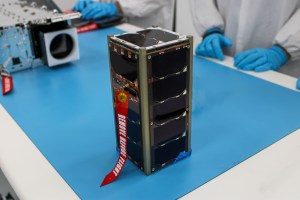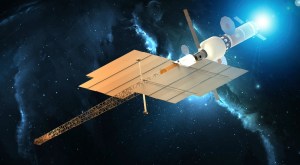Editor’s note: Development of the Asteroid Redirect Mission ended under White House Space Policy Directive 1, issued Dec. 11, 2017, but many of the central technologies in development for that mission, such as solar electric propulsion, will continue, as they constitute vital capabilities needed for future human deep space missions. Web content on the mission is being kept online as historical record.
NASA’s FY2014 budget proposal includes a plan to robotically capture a small near-Earth asteroid and redirect it safely to a stable orbit in the Earth-moon system where astronauts can visit and explore it.
Performing these elements for the proposed asteroid initiative integrates the best of NASA’s science, technology and human exploration capabilities and draws on the innovation of America’s brightest scientists and engineers. It uses current and developing capabilities to find both large asteroids that pose a hazard to Earth and small asteroids that could be candidates for the initiative, accelerates our technology development activities in high-powered solar electric propulsion and takes advantage of our hard work on the Space Launch System rocket and Orion spacecraft, helping to keep NASA on target to reach the President’s goal of sending humans to Mars in the 2030s.
When astronauts don their spacesuits and venture out for a spacewalk on the surface of an asteroid, how they move and take samples of it will be based on years of knowledge built by NASA scientists and engineers who have assembled and operated the International Space Station, evaluated exploration mission concepts, sent scientific spacecraft to characterize near-Earth objects and performed ground-based analog missions.
As early as the 1970s, NASA examined potential ways to use existing hardware to visit an asteroid to understand better its characteristics. On the International Space Station, scientific investigations and technology demonstrations are improving knowledge of how humans can live and work in space. The agency also has examined many possible mission concepts to help define what capabilities are needed to push the boundaries of space exploration.
During the early space shuttle flights and through assembly of the space station, NASA has relied on testing both in space and on Earth to try out ideas through a host of analog missions, or field tests, that simulate the complexity of endeavors in space.
Through 16 missions in the National Oceanic and Atmospheric Administration’s underwater Aquarius Reef Base off the coast of Key Largo, Fla., aquanauts have tested techniques for human space exploration. These underwater tests have been built upon the experience gained by training astronauts in the Neutral Buoyancy Laboratory at NASA’s Johnson Space Center in Houston to assemble and maintain the space station. The NASA Extreme Environment Mission Operations (NEEMO) 15 and 16 missions in 2011 and 2012, respectively, simulated several challenges explorers will face when visiting an asteroid, including how to anchor to and move around the surface of a near-Earth object and how to collect samples of it.
NASA also has simulated an asteroid mission as part of its 2012 Research and Technology Studies ground test at Johnson. During the simulation, a team evaluated how astronauts might do a spacewalk on an asteroid and accomplish other goals. While performing a spacewalk on a captured asteroid will involve different techniques than the activities performed during recent analog exercises, decisions made about ways to best sample an asteroid will be informed by the agency’s on-going concept development and past work.
Scientific missions also have investigated the nature of asteroids to provide a glimpse of the origins of the solar system. From the Pioneer 10 spacecraft, which in 1972 was the first to venture into the Main Asteroid Belt, to the Dawn mission, which recently concluded its investigations of asteroid Vesta and is on its way to the dwarf planet Ceres, NASA’s forays help us understand the origins of the solar system and inform decisions about how to conduct missions to distant planetary bodies. Scientists both at NASA and across the world also continue to study asteroids to shed light on their unique characteristics.
As NASA ventures farther into the solar system, the agency continues to simulate and evaluate operations and technical concepts for visiting an asteroid.



































